Pros and Cons of Electric Cars
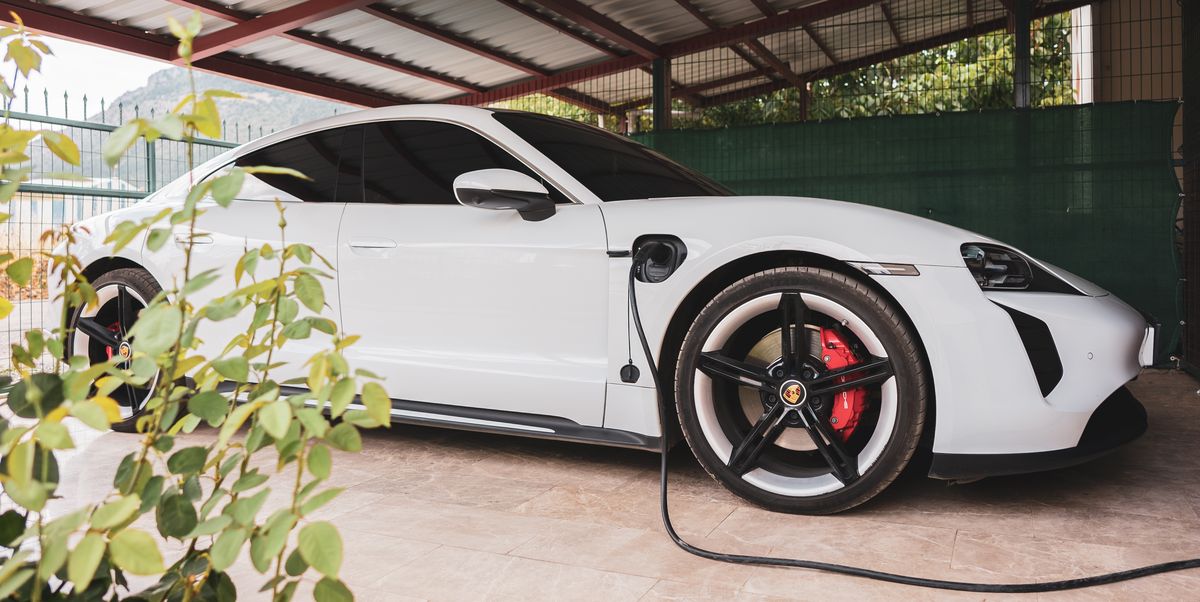
If the forecasts by regulators and automakers are correct, the future of the automobile is going to be heavily reliant on battery-electric propulsion. But we don’t live in the future, we live in the present. It’s a time of great transition for the industry, but there are a few kinks that still need working out.
Electric cars are efficient, quiet, and torque-rich. They can also be expensive, tend to be heavy, and are plagued by a limited public charging infrastructure—something we expect will get better in the coming years. There are a number of benefits to choosing some level of electrification in your next vehicle, but some tradeoffs do apply.
What Defines an Electric Car?
In today’s automotive landscape, an electric car is defined as a passenger vehicle that uses an electric drive motor for propulsion. This broad definition, which technically encompasses a number of powertrain setups, includes hybrid vehicles.
Toyota
A hybrid, such as the Toyota Prius, burns fossil fuel to power the vehicle’s internal-combustion engine, which subsequently plays a part in generating the electricity needed to power the car’s electric drive motor (an onboard battery pack stores this energy). Plug-in-hybrid vehicles (PHEVs) take this same concept and add the option to pull power from an external source, such as the energy grid itself, courtesy of an external charge port. PHEVs allow for short-range operation on battery power alone. Once enough of the battery’s energy is drained, PHEVs rely on the gasoline engine to serve as a generator and/or power source for the drive wheels.
Those in search of emission-free electric driving currently have two options to choose from: hydrogen fuel-cell electric vehicles (HFCVs or FCEVs) and battery-electric vehicles (BEVs). The former setup uses onboard fuel cells to react with hydrogen fuel (stored in an onboard tank) with oxygen to produce electricity to power such a vehicle’s electric drive motor. The combination of these two chemicals (hydrogen and oxygen) results in HFCVs exhausting water vapor.
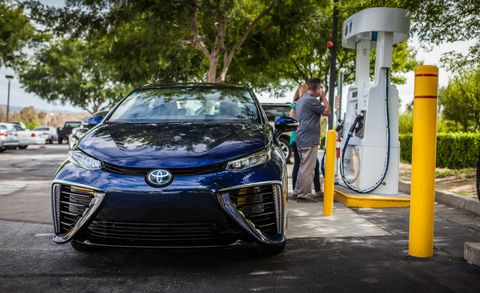
Alas, the limited hydrogen infrastructure in the U.S. makes it difficult to refuel HFCVs. As such, the two HFCVs currently offered in the U.S., the Toyota Mirai sedan and the Hyundai Nexo SUV, are strictly sold in California, a state with an existing—but still subpar—hydrogen fueling infrastructure.
Thus BEVs are the sole option for those looking to switch to an emissions-free car. Like PHEVs, BEVs feature an external charge port that allows owners to charge their car’s onboard battery pack using energy from an external source, such as the local energy grid. Unlike PHEVs, BEVs have no internal-combustion engine (ICE) onboard to serve as a generator or propulsion source. Without an ICE to lug around, BEVs feature larger-capacity battery packs that allow them to drive farther between charges.
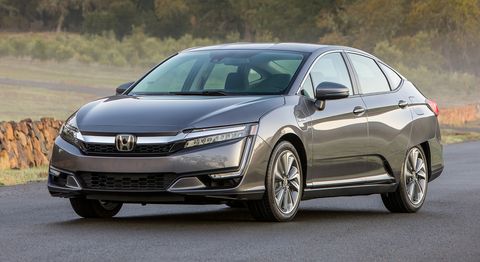
Pros and Cons of Partial Electrification
PRO: Hybrids deliver better fuel economy without lifestyle changes.
Hybrids don’t require you to change your driving habits in order to change your impact. These vehicles are not dependent on electricity, as both have internal combustion engines onboard that burn gasoline (or diesel in other markets), which is easy to find at any gas station. PHEVs are just the same, however, they offer owners the opportunity to dip their toe into the proverbial EV pool. Want to limit your emissions? Then plug in and charge the battery pack to enjoy a limited range of strictly battery-electric power.
PRO: PHEVs suit the average commute.
According to the United States Census Bureau, the average one-way commute for American drivers is up to about 28 minutes each way per day. PHEVs, such as the Toyota RAV4 Prime or Kia Sorento Plug-in Hybrid, are capable of driving between 30–40 miles on battery power alone. In PHEVs like these, it’s possible you may only find yourself burning gas when you go on an extended drive.
PRO: Charging is less of a concern.
It’s not possible to buy a jerrycan’s worth of extra electrons (yet) for an EV that runs out of juice. However, all it takes is a couple of gallons of gas to get a hybrid or plug-in hybrid vehicle back on the move. Plus, unlike our charging infrastructure (which, admittedly, continues to improve and grow by the day), there are gas stations everywhere.
CON: Combustion engine maintenance.
Because there’s an ICE on board, hybrid and plug-in-hybrid vehicles still require the typical maintenance you expect of any gas-powered car. Electric motors, meanwhile, need comparatively little maintenance. Still, it’s not all bad news. Thanks to the use of regenerative braking from the electric motor, an electrified vehicle’s brakes often last longer and require less service than those of strictly ICE-powered vehicles.
CON: Still burning fossil fuels.
Gasoline-electric hybrids still burn fossil fuels, which means these vehicles still produce harmful emissions. A PHEVs ability to putter about on battery power alone means it’s possible for consumers to largely avoid firing up the gas engine. Still, it will inevitably turn on and begin combusting fuel.
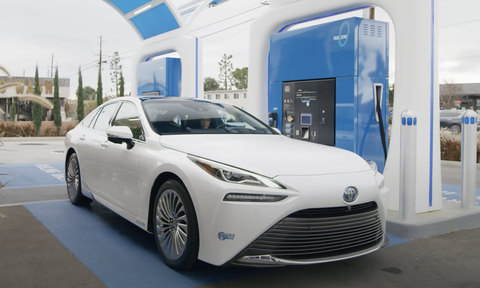
Toyota
Pros and Cons of Hydrogen Fuel-Cell Electric Vehicles
PRO: The technology works.
The California-only Toyota Mirai has a range of up to 402 miles and can be refueled nearly as quickly as a gasoline-powered car. It’s as smooth and refined as an EV, and less complex than a PHEV.
CON: Good luck finding a fuel station.
If the infrastructure for electrical charging is still young, then hydrogen infrastructure is embryonic. Currently, HFCVs really only make sense in limited applications (mostly in California), or perhaps for fleet use.
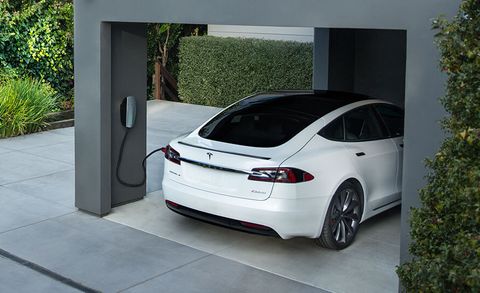
Pros and Cons of Battery-Electric Vehicles
PRO: Performance and power delivery.
BEVs have the potential to be insanely quick. Just look at the Rivian R1T, a more than 7000-pound electric pickup truck that shot to 60 mph in 3.0 seconds under our watch. But the benefits of an electric motor are not limited strictly to straight-line acceleration. Thanks to the near-instant torque production of an electric motor, even more modestly powered BEVs tend to feel pretty peppy in typical driving situations.
PRO: Clean motoring.
With no exhaust (and thus no tailpipe emissions), electric motors are far cleaner than gas engines. Of course, just how much cleaner electric cars are compared to their gas-powered kin is dependent on a number of factors. For instance, if your local power plant produces electricity by burning fossil fuels, then the net environmental benefits of your EV lessen. That said, not all is lost. While many of America’s power plants do burn fossil fuels, solar and wind farms can supplement the grid, further countering any emissions indirectly produced by EVs.
PRO: Less maintenance.
Due to the fact electric motors have fewer moving parts than combustion engines, electric vehicles require less maintenance relative to their gas- and diesel-powered counterparts. Even better, the fact EVs use regenerative braking to slow down, means these vehicles use their mechanical brakes less frequently. As such, the braking components on EVs tend to wear at a much slower rate than those of cars with combustion engines.
CON: Battery blues.
According to the U.S. Department of Energy, the expected life of an EV’s battery pack is between 10 and 12 years. That said, battery packs can last longer than their estimate. Once a battery pack bites the dust, though, replacing it is rather pricey. As of this writing, new battery packs cost thousands, if not tens of thousands, of dollars to replace. These prices will likely come down as more battery-electric vehicles enter service. Likewise, consumers can save some money by purchasing a refurbished battery pack for their EV.
CON: Charging hassles.
America’s EV charging infrastructure is still rather weak, which means it can be difficult to find an available charger, let alone a functioning one, in public places. On the plus side, the most cost-effective and efficient way to charge an EV is via an at-home charger. Specifically, when hooked up to a 240-volt Level 2 charger, which ought to ensure your EV gets a sufficient charge overnight. Depending on the specific EV you own, the range added overnight should be more than enough to cover your daily driving needs.
CON: Towing troubles.
The hassles of America’s charging infrastructure are exacerbated when towing, too. With the likes of the Ford F-150 Lightning and Rivian R1T capable of towing up to 10,000 and 11,000 pounds, respectively, the era of towing with an EV is upon us. Unfortunately, doing so takes a toll on range. We discovered both the Lightning and R1T’s EPA-rated ranges were cut by nearly two-thirds when towing a 6100-pound camper. Unless the campsite or boat ramp is close by, then you may still be better off relying on a vehicle with an internal combustion engine to do your towing duties, as, in today’s environment, it’s far easier to find a reliable gas station over a charging station.



